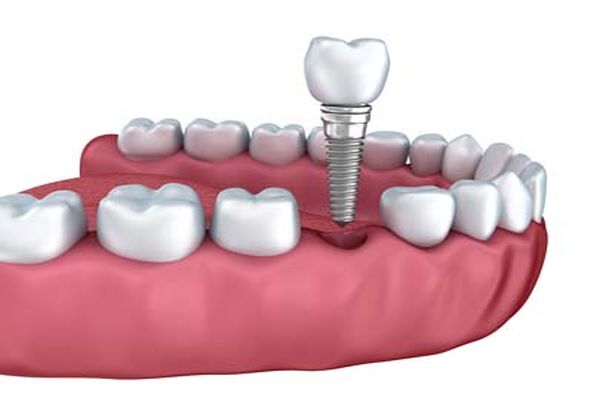 The concept of tooth replacement has been around for a very long time and is part of the reason why dentistry has been a mainstay of human health. There are numerous reasons why people want to get tooth replacement if they have lost a tooth or the tooth is too damaged or unhealthy to remain in place. The first and most important reason why people want to replace teeth is because it is embarrassing to have a missing tooth, especially if that tooth is in the front of the mouth. In addition to their aesthetic value, teeth also provide you with an important service, namely in the ability to bite into and chew food. Missing teeth can greatly hinder this endeavor, which is another reason why people visit our office for secure dental implants. Finally, teeth actually help you enunciate words and pronounce them properly. People with missing teeth often have a hard time speaking or being understood. If you have lost one or several of your teeth then you understand these challenges intimately. The good news is that you do not have to live with them.
The concept of tooth replacement has been around for a very long time and is part of the reason why dentistry has been a mainstay of human health. There are numerous reasons why people want to get tooth replacement if they have lost a tooth or the tooth is too damaged or unhealthy to remain in place. The first and most important reason why people want to replace teeth is because it is embarrassing to have a missing tooth, especially if that tooth is in the front of the mouth. In addition to their aesthetic value, teeth also provide you with an important service, namely in the ability to bite into and chew food. Missing teeth can greatly hinder this endeavor, which is another reason why people visit our office for secure dental implants. Finally, teeth actually help you enunciate words and pronounce them properly. People with missing teeth often have a hard time speaking or being understood. If you have lost one or several of your teeth then you understand these challenges intimately. The good news is that you do not have to live with them.
You Don’t Have to Wear Dentures
For many years, dentists used similar techniques to replace teeth. Typically, and most commonly, dentists would use dentures to replace teeth. However, the problem with dentures is that they sit on top of the gums and therefore are not as secure as they should be. In other words, you would have to use adhesive or wires to ensure that your dentures do not fall out of your mouth every time you smile, speak, or bite into something. While modern dentures are far better than they used to be, they will never feel natural. New technology has emerged that has greatly enhanced our ability to replace teeth. This is done using a method of tooth replacement known as dental implants.
Why Patients Love Dental Implants
Dental implants imitate the natural order of teeth, replacing your lost teeth with a system that virtually mimics the natural teeth you have lost. The root that holds your teeth in place is replaced by a tiny titanium screw placed directly into the jawbone. The tiny screw, also known as the dental implant, is then attached to a dental crown by means of an abutment. The crown is designed to look, feel, and act exactly like your natural teeth.
There are a number of intrinsic benefits of using dental implants as a way of tooth replacement. For one, the dental implants are permanent because it is directly placed into your jawbone. This means you never have to worry about losing your dental implant because it fell out, was loose, or you took it out and could not remember where you placed it. This also means there is no special treatment or care required of dental implants. Once the tooth replacement procedure is completed, you will simply maintain the new dental implant as part of your regular set of teeth. This means brushing, flossing, and rinsing like normal. As a result, this is the most permanent and natural way to replace your lost teeth.
Related Posts
The Process of Getting a Dental Implant From a Periodontist
Are you considering getting a dental implant from a periodontist? Dental implants, also known as endosseous implants or fixtures, are a great solution for people who have lost teeth due to injury, …
Oral Surgery: Who Is a Candidate for Dental Implants?
If you have a missing tooth you would like to replace, you need to learn more about getting a dental implant. Dental implants can improve your smile. They can also prevent …
Tooth Replacement - The Steps for a Dental Implant Procedure
One of the most common treatment options for missing teeth is the dental implant. This permanent replacement has a natural appearance and feel that mimics real teeth. Implants are typically done for …
Healing Period After Initial Dental Implant Placement
Dental implant placement is a term often used to describe the entire process of installing an implant-supported tooth. The process varies, depending on a patient’s unique set of circumstances. This means that …
